Are There Any Freshwater Seas Or Oceans In The World?
Freshwater is a precious natural resource essential for the sustenance of humankind and animals on this planet. Earth has an estimated 1.386 billion km³ of water, of which 97.5% is salt water and only 2.5% is freshwater.
Out of the freshwater, only 0.3% is available as liquid water. The rest is trapped in ice caps and glaciers and cannot be used.
Freshwater resources like glaciers, lakes, ponds, rivers, streams, groundwater and wetlands comprise less than one per cent of the world’s total surface but are home to ten per cent of animals and around 40% of the fish species.
Freshwater habitats are crucial for the sustenance of life as they provide water for drinking, agriculture, generating electricity, regulating the climate etc.
Even though freshwater is quite limited and scarce, human communities have been engaged in activities that have impacted the quality of freshwater sources like streams, rivers, and certain bodies of water that have a lot of significance geographically and politically.
Freshwater resources are depleting daily due to excessive development, polluted runoff, garbage, pollution from myriad sources and so on.
Many international organisations are working to clean freshwater sources and prevent them from being contaminated so that the world can have access to safe drinking water.
There are no freshwater seas or oceans in the world. However, this article will explore some of the world’s largest freshwater bodies.
1. Lake Superior
Known as the largest freshwater lake in the world in terms of surface area, Lake Superior is also the third biggest lake in terms of the volume of water it contains, which is 10% of the surface freshwater across the earth.
It spans 31,700 square miles and has an average depth is 147 m. It contains about 12,100 cubic kilometres of water. Its shoreline stretches to 2726 miles or 4387 km.
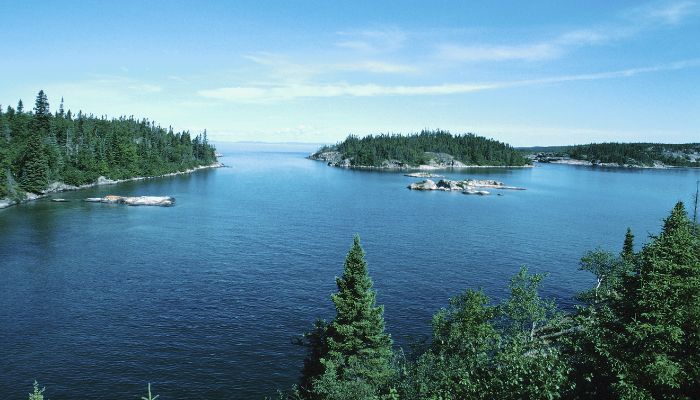
Lake Superior lies in central North America and lies on the Canada-US border. Its waters drain into Huron lake through the St Marys River, the St Lawrence river, and finally to the Atlantic Ocean.
It became popular in the 19th century as a point of exporting manufactured goods. It is an essential link in the Great Lakes Waterway and provides a maritime route for shipping iron ore, grains and other mined materials. Lake freighters and other ocean-going freighters transport these items across the lake.
2. Lake Victoria
One of the Great African Lakes, Lake Victoria, has a surface area of about 59,947 square kilometres, making it the largest tropical lake in the world. It is the second biggest freshwater body after North America’s Lake Superior.
Lake Victoria lies in a depression and has an average water depth of 40 metres and a maximum depth of 80 to 84 metres. It has a 7,142 km long coastline, and the lake is divided among three African nations of Uganda, Kenya and Tanzania.
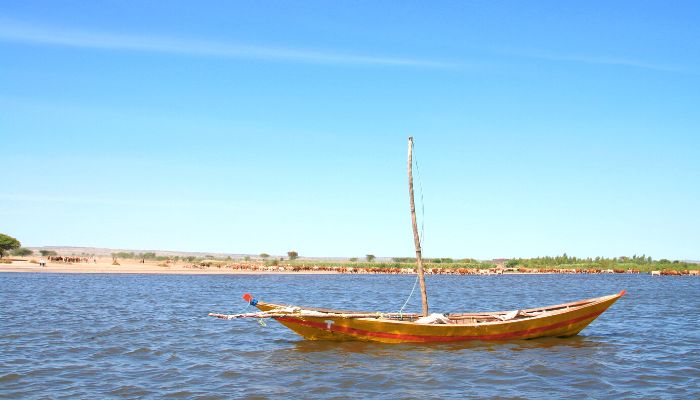
Explorer John Hanning Speke named it after Queen Victoria while on an expedition.
The lake is home to many species of fish found nowhere else, such as the cichlids and the invasive Nile perch, which has driven many local species to the verge of extinction.
3. Lake Huron
The third biggest freshwater lake on the planet, Lake Huron, covers 23,007 square miles. It lies in the states of Michigan and also Ontario. The Georgian Bay protrudes from the lake into Ontario. Another striking feature of this water body is the Manitoulin island that distinguishes the North Channel and Georgian Bay from the lake’s waters.
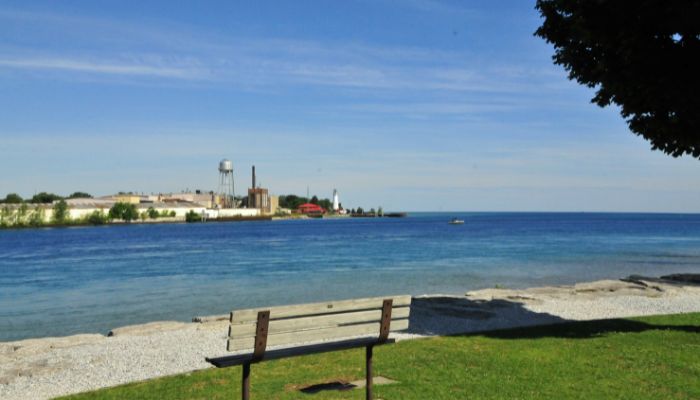
Manitoulin is also the largest lake island in the world. Another smaller bay called Saginaw protrudes from the lake into Michigan. Many cities on Lake Huron, such as Port Huron, have a flourishing automotive industry. It has paper mills and many businesses related to tourism.
Tourists flock to see the historic downtown, the city’s marina and boardwalk, the museum and the lighthouse. The storm of 1913 is often remembered whenever Lake Huron is talked about. During this storm, about ten ships sank, and over 20 ran aground. It also killed over 200 seamen.
4. Lake Baikal
Located in southeastern Siberia, the Baikal Lake dates back 25 million years, making it the oldest and deepest lake on earth. It is 1700 m deep and has 20% of the world’s total freshwater in liquid form.
It is famously known as the Galapagos of Russia. Its unique geological features have made it one of the richest and most diverse water bodies beaming with flora and fauna. It is a site of crucial evolutionary research as well.
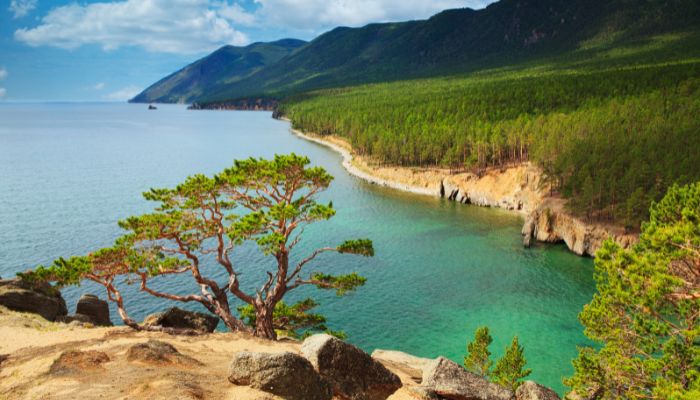
It contains many endemic species and houses the Buryat tribals on its coasts. These people raise cattle, sheep, and horses and live on the eastern banks of the serene lake.
It is also among the clearest lakes in the world, with glistening and transparent waters. The place was declared a UNESCO World Heritage Site in 1996. Many people visit the lake, and it promotes tourism in the area.
5. Sea of Galilee
The Sea of Galilee is Israel’s largest freshwater lake spanning 64 square miles, the size of Washington, D.C. Although it is a lake, it is called the sea due to an old tradition. Christians consider the place pious, and it has become a pilgrimage site.
Christians believe that Jesus walked on the waters of this lake and many people visit the lake in large numbers. It was known by different names depending on the significant settlement that grew on its coast throughout its history of habitation.
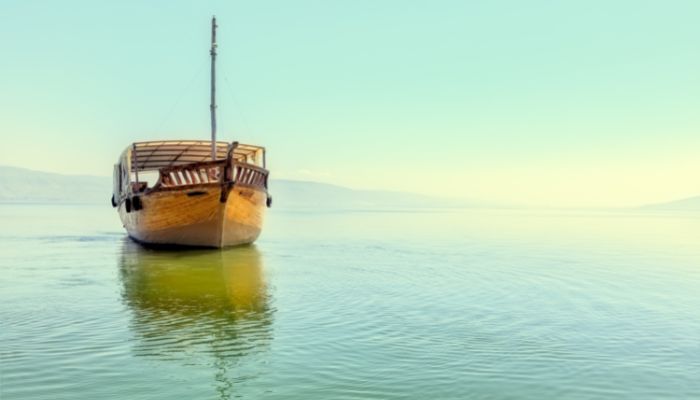
The people of Israel call it the Kinneret, meaning violin in Hebrew since the lake resembles the shape of the musical instrument.
It is a major source of drinking water, fulfilling around one-third of the population’s water needs. It also supports the fishing industry, and the coastal areas grow bananas, mangoes, dates, cotton and alfalfa.
It is fed by underwater springs; however, the primary source of water is River Jordon which flows north to the south.
Nature lovers can come here for bird watching as many species, like the black francolins, grey herons, black-headed gulls etc. can be found here.
6. Lake Michigan
The third biggest lake of the 5 Great Lakes of North America, Lake Michigan, is situated entirely within the borders of the United States. It is about 494 km long and 190 km wide, with a maximum water depth of 281 metres and an average depth of 85 m.
Mackinac Straits link the lake with Huron lake.
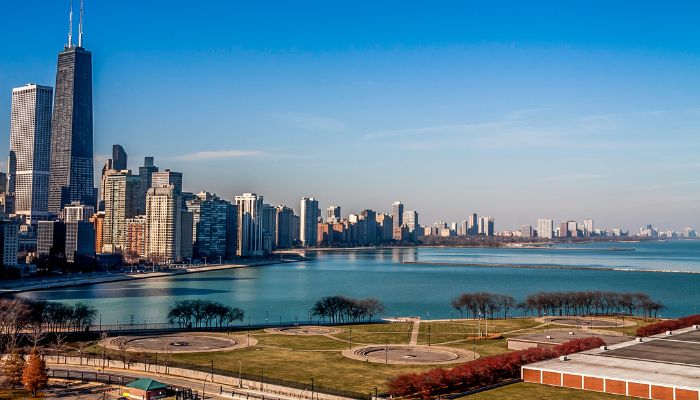
There are numerous ports along its shores, like the Milwaukee and Wisconsin’s City of Green Bay, port Chicago in Illinois, Muskegon port etc. It also has many long bays like the Grand and Little Traverse Bays in the northeast.
The word Michigan comes from an Ojibwe word which means excellent water, which was exactly what the lake was to the several tribes that inhabited its coasts throughout the 16th to the 19th centuries.
Lake Michigan’s coasts have many beaches; some are truly beautiful, with dunes and sand cherries. About 12 million people live along the lake’s coasts. It is also called the third coast of the United States.
7. Lake Tanganyika
Covering around 32,900 square kilometres, Tanganyika lake is the longest freshwater lake on earth and the second biggest lake by volume. It is also one of the oldest freshwater bodies in the world.
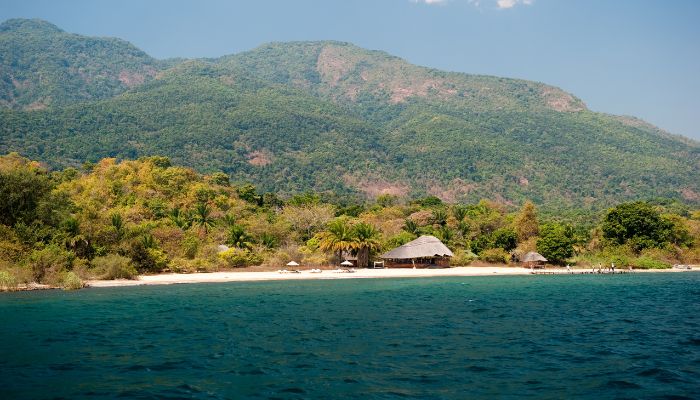
It’s shared among Tanzania, Congo, Burundi and Zambia nations. It is also the deepest rift lake in Africa, with a 1470 m depth. Many rivers, like the Ruzizi, Malagarasi, Kalambo etc., drain into the lake.
The lake’s water flows or exits through the Lukuga river into the Congo river and then into the Atlantic. Tanganyika lake is known for many islands like the Kumbula, Milima, Kavala etc.
8. Great Bear Lake
The 8th biggest lake in the world, Great Bear Lake, lies in Canada’s Boreal forest. It is the fourth biggest freshwater lake in North America.
It reaches a depth of more than 440 m at its deepest point and is enclosed by tundra and forest cover. The lake is famous for its crystal clear waters and is home to many fish like the speckled trout. However, it has the least amount of fish species of all the Canada’s Great Lakes.
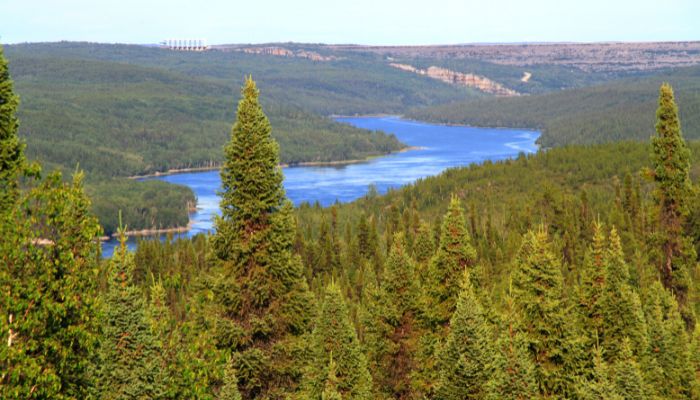
The lake spans 31,153 square kilometres and has a 1690-mile shoreline. It is covered with ice from November till July.
Many rivers flow into the lake, including the Whitefish river, Haldane, Sloan, Dease and the Big Spruce river. There are lodges around the lake for those coming here for hunting and fishing. The eastern bank of the lake has uranium deposits discovered in the 1930s.
Conclusion
Most of the earth’s freshwater lakes are located in the Northern Hemisphere. Per data, there are about two million lakes of different sizes in Canada alone. These freshwater bodies not only meet our consumption needs but beautify the planet and are home to unique species of plants and animals.
They also support the regional economies of nations or states with which they share their borders and specific sectors like fishing, tourism and shipping.
The majority of the world’s drinkable water is found in freshwater lakes. The percentage of freshwater compared to salt water is relatively low; however, there is still enough freshwater in the world to meet our needs.
Human communities must conserve and judiciously use freshwater so that future generations are not deprived of it.
You may also like to read-
- 10 Laptev Sea Facts You Might Not Know
- 10 Kara Sea Facts You Must Know
- 10 Marine Biome Facts You Must Know
- 15 Amazing Facts About Coral Reefs
Disclaimer: The author’s views expressed in this article do not necessarily reflect the views of Marine Insight. Data and charts, if used in the article, have been sourced from available information and have not been authenticated by any statutory authority. The author and Marine Insight do not claim it to be accurate nor accept any responsibility for the same. The views constitute only the opinions and do not constitute any guidelines or recommendations on any course of action to be followed by the reader.
The article or images cannot be reproduced, copied, shared or used in any form without the permission of the author and Marine Insight
Do you have info to share with us ? Suggest a correction

About Author
Zahra is an alumna of Miranda House, University of Delhi. She is an avid writer, possessing immaculate research and editing skills. Author of several academic papers, she has also worked as a freelance writer, producing many technical, creative and marketing pieces. A true aesthete at heart, she loves books a little more than anything else.
Latest Maritime Knowledge Articles You Would Like:
Subscribe To Our Newsletters
By subscribing, you agree to our Privacy Policy and may receive occasional deal communications; you can unsubscribe anytime.
















